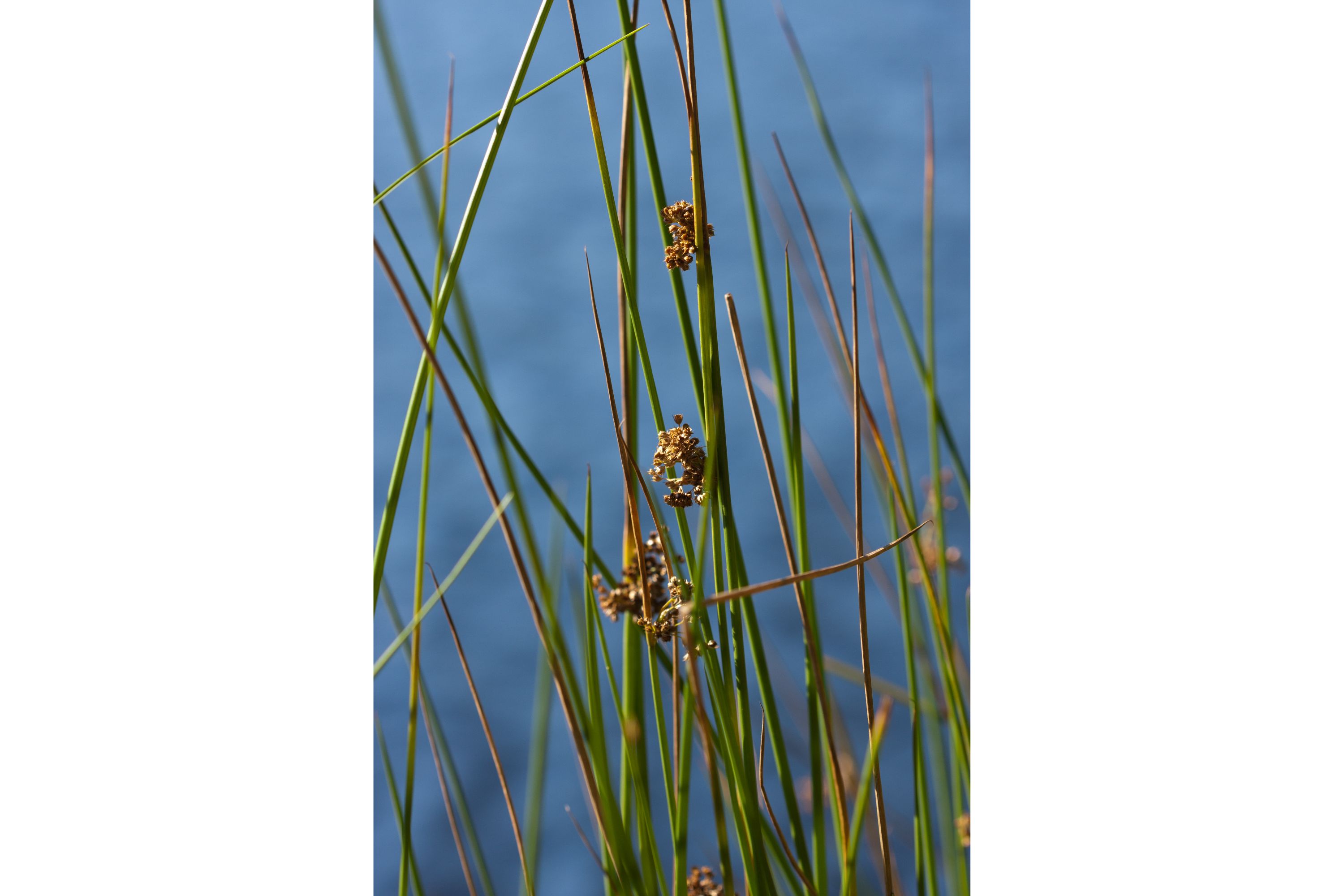Soft rush
(Juncus effusus)

Description
Juncus effusus, with the common names common rush or soft rush, is a perennial herbaceous flowering plant species in the rush family Juncaceae. In North America, the common name soft rush also refers to Juncus interior. Juncus effusus is nearly cosmopolitan, considered native in Europe, Asia, Africa, North America, and South America. It has naturalized in Australia, Madagascar, and various oceanic islands. It is found growing in wet areas, such as wetlands, riparian areas, and marshes. In the United Kingdom it is found in purple moor-grass and rush pastures and fen-meadow plant associations. Juncus effusus grows in large clumps about 1.5 metres (4 ft 11 in) tall at the water's edge along streams and ditches, but can be invasive anywhere with moist soil. It is commonly found growing in humus-rich areas like marshes, ditches, fens, and beaver dams. The stems are smooth cylinders with light pith filling. The yellowish inflorescence appears to emerge from one side of the stem about 20 centimetres (8 in) from the top. In fact the stem ends there; the top part is the bract, that continues with only a slight colour-band marking it from the stem. The lower leaves are reduced to a brown sheath at the bottom of the stem. Juncus is a genus of monocotyledonous flowering plants, commonly known as rushes. It is the largest genus in the family Juncaceae, containing around 300 species. Rushes of the genus Juncus are herbaceous plants that superficially resemble grasses or sedges. They have historically received little attention from botanists; in his 1819 monograph, James Ebenezer Bicheno described the genus as "obscure and uninviting". The form of the flower differentiates rushes from grasses or sedges. The flowers of Juncus comprise five whorls of floral parts: three sepals, three petals (or, taken together, six tepals), two to six stamens (in two whorls) and a stigma with three lobes. The stems are round in cross-section, unlike those of sedges, which are typically somewhat triangular in cross-section. In Juncus section Juncotypus (formerly called Juncus subg. Genuini), which contains some of the most widespread and familiar species, the leaves are reduced to sheaths around the base of the stem and the bract subtending the inflorescence closely resembles a continuation of the stem, giving the appearance that the inflorescence is lateral.
Taxonomic tree:







